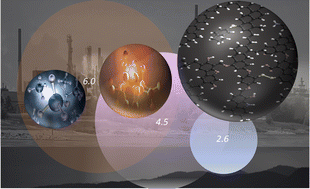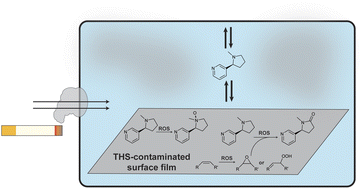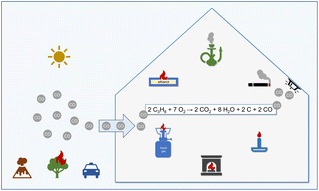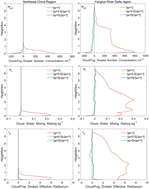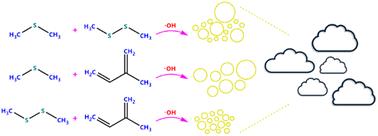The influence of activation as key parameter for oxygen sensing by luminescent metal-organic frameworks has been investigated and quantified for the archetype MOF-76(Eu). Activation at different conditions (regarding temperature and solvent-exchange for distinct vacuum pressure and heating time), shows an influence on the overall quenching, response time and cyclability due to different pore accessibility and surface area and therefore on the overall performance of the sensor. The optical sensing process is based on luminescence quenching, analyzed from high vacuum (10−7 bar) to dosing oxygen from 0.01 bar to 1 bar. Strong influence of the different activation parameters is observed, as MOF-76(Eu) activated at 50 °C shows some quenching of the luminescence intensity within 30 min, while methanol-exchange and subsequent activation at 250 °C leads to a quenching rate of 98.6%. In addition, the sensor response occurs more than 1000 times faster within 0.2 s. These results correlate well with physisorption data, which reveal a significant change in porosity and surface area according to the degree of activation. For a better understanding of the involved processes, adsorption isotherms were recorded, surface areas determined and correlated to the photophysical parameters, including Stern-Volmer kinetics and cycling experiments for the differently activated MOF sensors
Monthly Archives: March 2024
The characteristics of adsorption Cr(VI) by iron-modified and iron-doped phosphorus-based biochar biochar
What happens if we ‘burn all the carbon’? carbon reserves, carbon budgets, and policy options for governments
Environ. Sci.: Atmos., 2024, Advance Article
DOI: 10.1039/D3EA00107E, Paper
DOI: 10.1039/D3EA00107E, Paper
 Open Access
Open Access This article is licensed under a Creative Commons Attribution-NonCommercial 3.0 Unported Licence.
This article is licensed under a Creative Commons Attribution-NonCommercial 3.0 Unported Licence.Kevin M. A. Parker, Michael R. Mainelli
New estimates indicate that current reserves would 'bust' IPCC RCP budgets – yet companies still explore and develop new reserves. Why is this and what can governments do about it?
To cite this article before page numbers are assigned, use the DOI form of citation above.
The content of this RSS Feed (c) The Royal Society of Chemistry
New estimates indicate that current reserves would 'bust' IPCC RCP budgets – yet companies still explore and develop new reserves. Why is this and what can governments do about it?
To cite this article before page numbers are assigned, use the DOI form of citation above.
The content of this RSS Feed (c) The Royal Society of Chemistry
Enhancing spatial inference of air pollution using machine learning techniques with low-cost monitors in data-limited scenarios
Environ. Sci.: Atmos., 2024, 4,342-350
DOI: 10.1039/D3EA00126A, Paper
DOI: 10.1039/D3EA00126A, Paper
 Open Access
Open Access This article is licensed under a Creative Commons Attribution 3.0 Unported Licence.
This article is licensed under a Creative Commons Attribution 3.0 Unported Licence.Leonardo Y. Kamigauti, Gabriel M. P. Perez, Thomas C. M. Martin, Maria de Fatima Andrade, Prashant Kumar
Our novel approach leverages accessible datasets and deep learning to achieve accurate air quality modeling in resource-limited environments.
The content of this RSS Feed (c) The Royal Society of Chemistry
Our novel approach leverages accessible datasets and deep learning to achieve accurate air quality modeling in resource-limited environments.
The content of this RSS Feed (c) The Royal Society of Chemistry
Local scale air quality impacts in the Los Angeles Basin from increased port activity during 2021 supply chain disruptions
Environ. Sci.: Atmos., 2024, 4,321-329
DOI: 10.1039/D3EA00166K, Paper
DOI: 10.1039/D3EA00166K, Paper
 Open Access
Open Access This article is licensed under a Creative Commons Attribution-NonCommercial 3.0 Unported Licence.
This article is licensed under a Creative Commons Attribution-NonCommercial 3.0 Unported Licence.T. Nash Skipper, Jennifer Kaiser, M. Talat Odman, Sina Hasheminassab, Armistead G. Russell
Satellite data, surface observations, and a chemical transport model are used to estimate the impacts of increased port activity during 2021 supply chain disruptions on NO2 and PM2.5 in Los Angeles, California.
The content of this RSS Feed (c) The Royal Society of Chemistry
Satellite data, surface observations, and a chemical transport model are used to estimate the impacts of increased port activity during 2021 supply chain disruptions on NO2 and PM2.5 in Los Angeles, California.
The content of this RSS Feed (c) The Royal Society of Chemistry
Temporal changes in thirdhand cigarette smoke film composition and oxidation of co-existing surface film chemicals
Environ. Sci.: Atmos., 2024, 4,330-341
DOI: 10.1039/D3EA00142C, Paper
DOI: 10.1039/D3EA00142C, Paper
 Open Access
Open Access This article is licensed under a Creative Commons Attribution-NonCommercial 3.0 Unported Licence.
This article is licensed under a Creative Commons Attribution-NonCommercial 3.0 Unported Licence.April M. Hurlock, Douglas B. Collins
Thirdhand smoke (THS) residues induce oxidation on indoor surfaces, with autoxidation continuing for weeks after deposition.
The content of this RSS Feed (c) The Royal Society of Chemistry
Thirdhand smoke (THS) residues induce oxidation on indoor surfaces, with autoxidation continuing for weeks after deposition.
The content of this RSS Feed (c) The Royal Society of Chemistry
Carbon monoxide as an indicator of indoor air quality
Environ. Sci.: Atmos., 2024, 4,291-305
DOI: 10.1039/D4EA00006D, Critical Review
DOI: 10.1039/D4EA00006D, Critical Review
 Open Access
Open Access This article is licensed under a Creative Commons Attribution 3.0 Unported Licence.
This article is licensed under a Creative Commons Attribution 3.0 Unported Licence.Tunga Salthammer
Carbon monoxide is a priority pollutant that is suitable as an indicator for assessing indoor air quality. Monitoring should preferably be embedded in an intelligent network of different sensors.
The content of this RSS Feed (c) The Royal Society of Chemistry
Carbon monoxide is a priority pollutant that is suitable as an indicator for assessing indoor air quality. Monitoring should preferably be embedded in an intelligent network of different sensors.
The content of this RSS Feed (c) The Royal Society of Chemistry
Modeling study of the effects of entrainment-mixing on fog simulation in the chemistry–weather coupling model GRAPES_Meso5.1/CUACE CW
Environ. Sci.: Atmos., 2024, 4,387-407
DOI: 10.1039/D4EA00003J, Paper
DOI: 10.1039/D4EA00003J, Paper
 Open Access
Open Access This article is licensed under a Creative Commons Attribution 3.0 Unported Licence.
This article is licensed under a Creative Commons Attribution 3.0 Unported Licence.Yang Zhao, Hong Wang, Xiaoqi Xu, Wenjie Zhang, Chen Han, Yue Peng, Chunsong Lu
Entrainment-mixing processes of fog with the surrounding ambient air are extremely intricate and impose significant effects on the microphysical and radiative properties of fog.
The content of this RSS Feed (c) The Royal Society of Chemistry
Entrainment-mixing processes of fog with the surrounding ambient air are extremely intricate and impose significant effects on the microphysical and radiative properties of fog.
The content of this RSS Feed (c) The Royal Society of Chemistry
Estimating the bioaccessibility of atmospheric trace elements within the Athabasca bituminous sands region using the acid soluble ash fraction of Sphagnum moss
Environ. Sci.: Atmos., 2024, 4,408-424
DOI: 10.1039/D3EA00071K, Paper
DOI: 10.1039/D3EA00071K, Paper
 Open Access
Open Access This article is licensed under a Creative Commons Attribution-NonCommercial 3.0 Unported Licence.
This article is licensed under a Creative Commons Attribution-NonCommercial 3.0 Unported Licence.Na Chen, Fiorella Barraza, René J. Belland, Muhammad B. Javed, Iain Grant-Weaver, Chad W. Cuss, William Shotyk
Total concentrations of trace elements in Sphagnum moss increase in concentration with distance toward bitumen mines and upgraders, but their solubility in the ash fraction after leaching in nitric acid is variable.
The content of this RSS Feed (c) The Royal Society of Chemistry
Total concentrations of trace elements in Sphagnum moss increase in concentration with distance toward bitumen mines and upgraders, but their solubility in the ash fraction after leaching in nitric acid is variable.
The content of this RSS Feed (c) The Royal Society of Chemistry
Secondary aerosol formation from mixtures of marine volatile organic compounds in a potential aerosol mass oxidative flow reactor
Environ. Sci.: Atmos., 2024, 4,351-361
DOI: 10.1039/D3EA00169E, Paper
DOI: 10.1039/D3EA00169E, Paper
 Open Access
Open Access This article is licensed under a Creative Commons Attribution-NonCommercial 3.0 Unported Licence.
This article is licensed under a Creative Commons Attribution-NonCommercial 3.0 Unported Licence.Alexia N. Moore, Lucia Cancelada, Ke'La A. Kimble, Kimberly A. Prather
This study examines the impact of marine VOC mixtures on secondary aerosol production. Comparing single VOC vs. mixtures demonstrates that mixtures significantly impact yields, size distributions, and chemical composition.
The content of this RSS Feed (c) The Royal Society of Chemistry
This study examines the impact of marine VOC mixtures on secondary aerosol production. Comparing single VOC vs. mixtures demonstrates that mixtures significantly impact yields, size distributions, and chemical composition.
The content of this RSS Feed (c) The Royal Society of Chemistry

